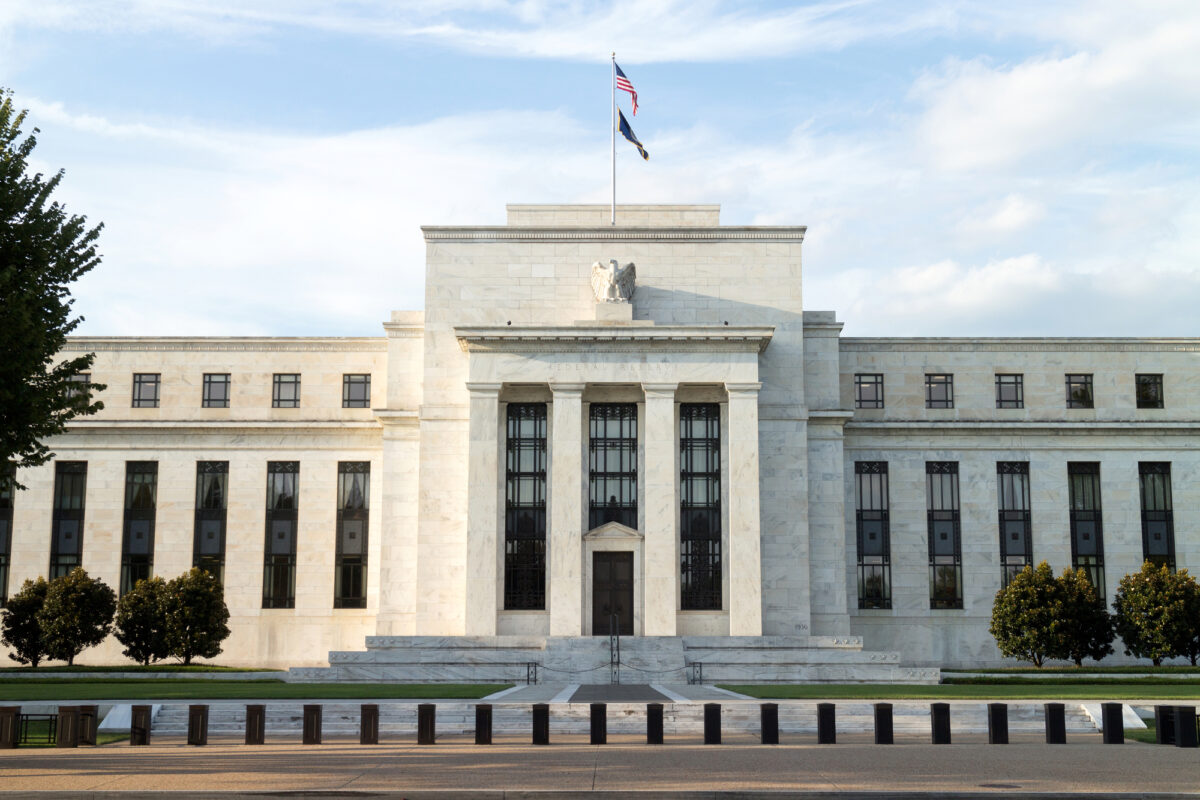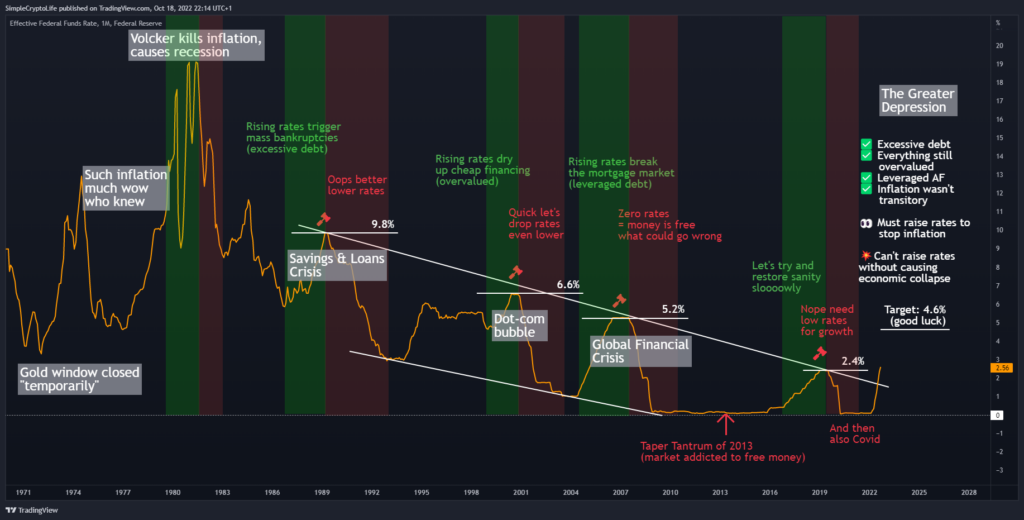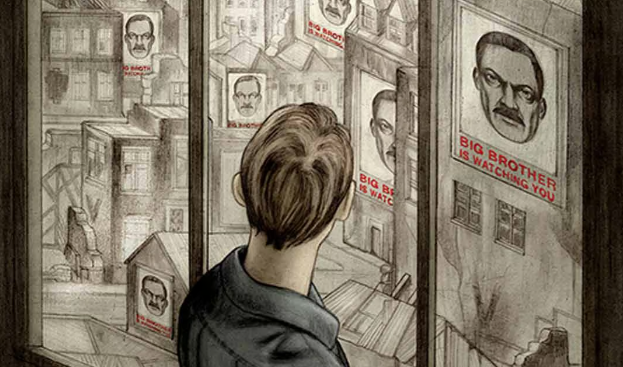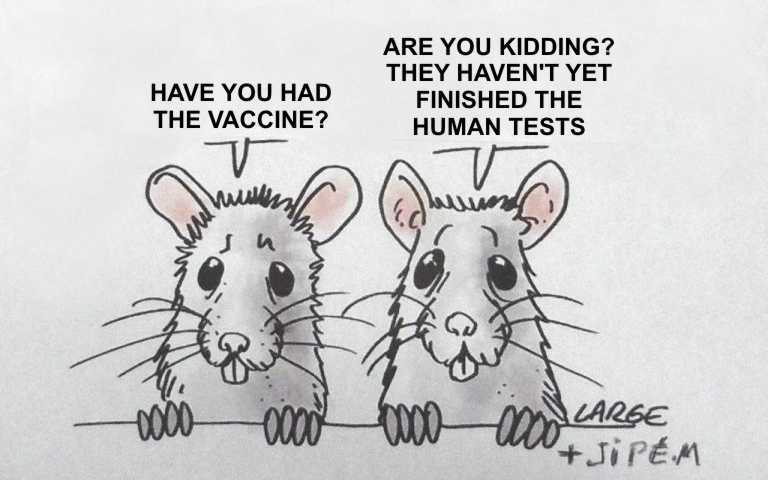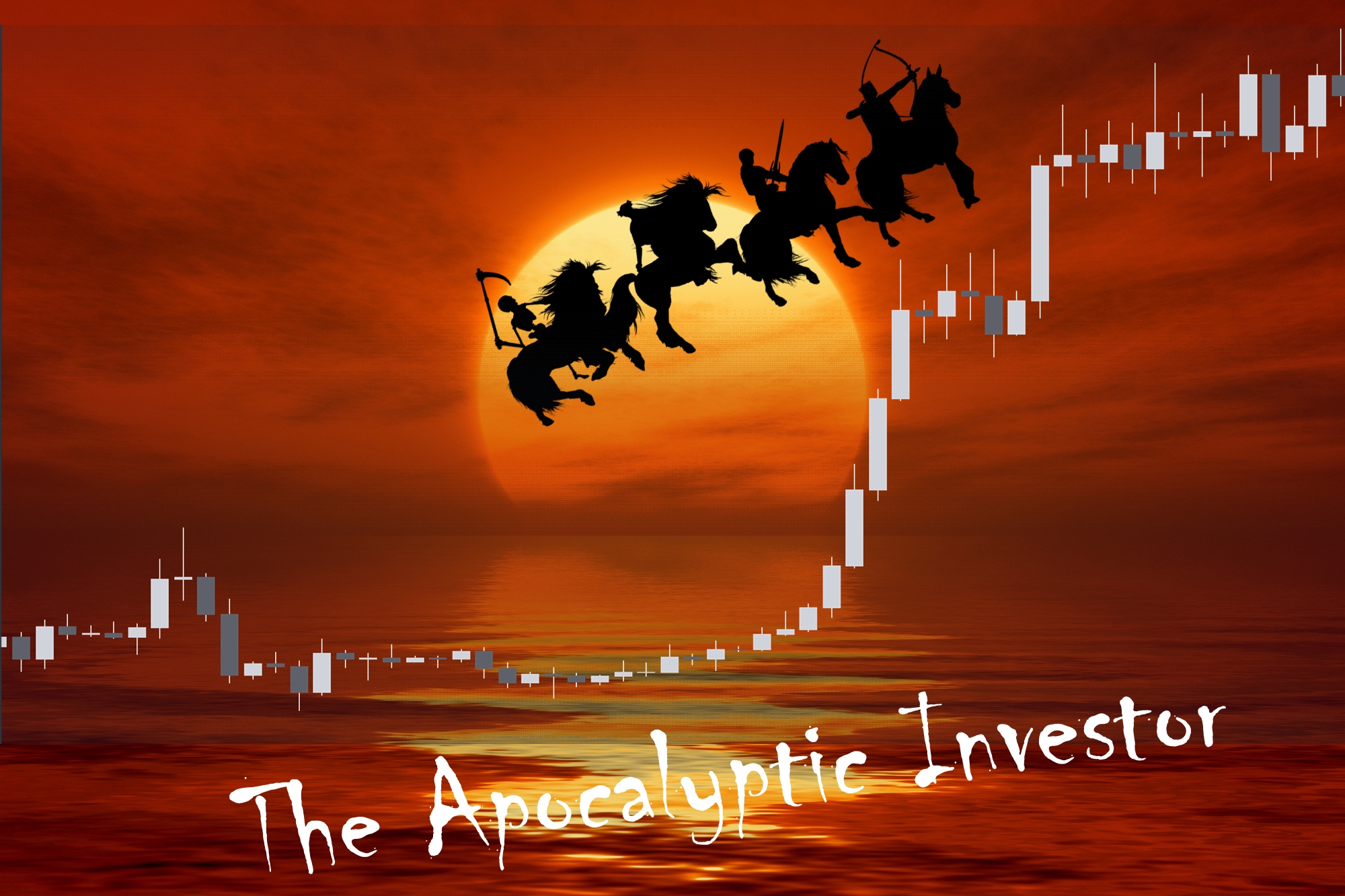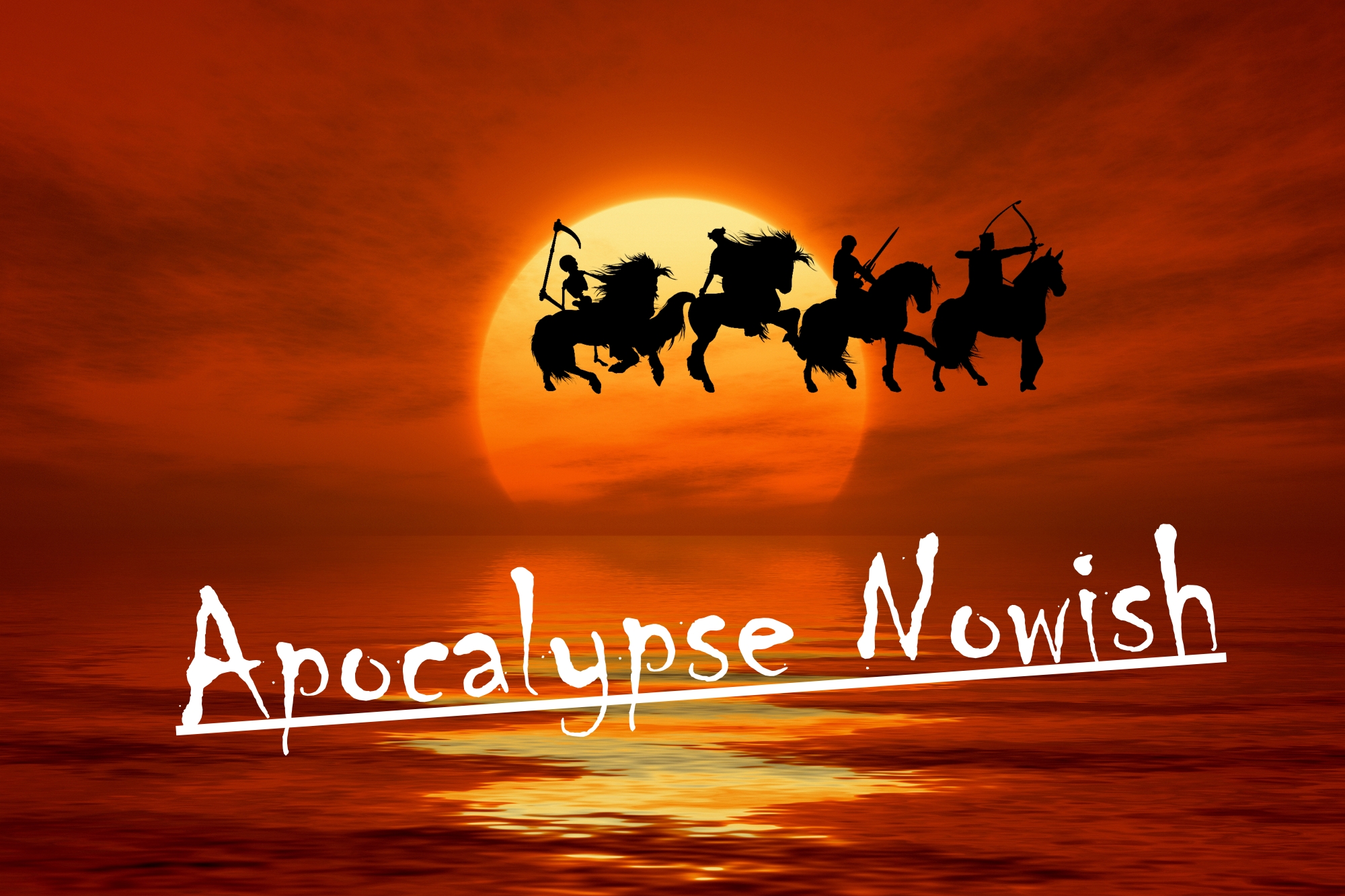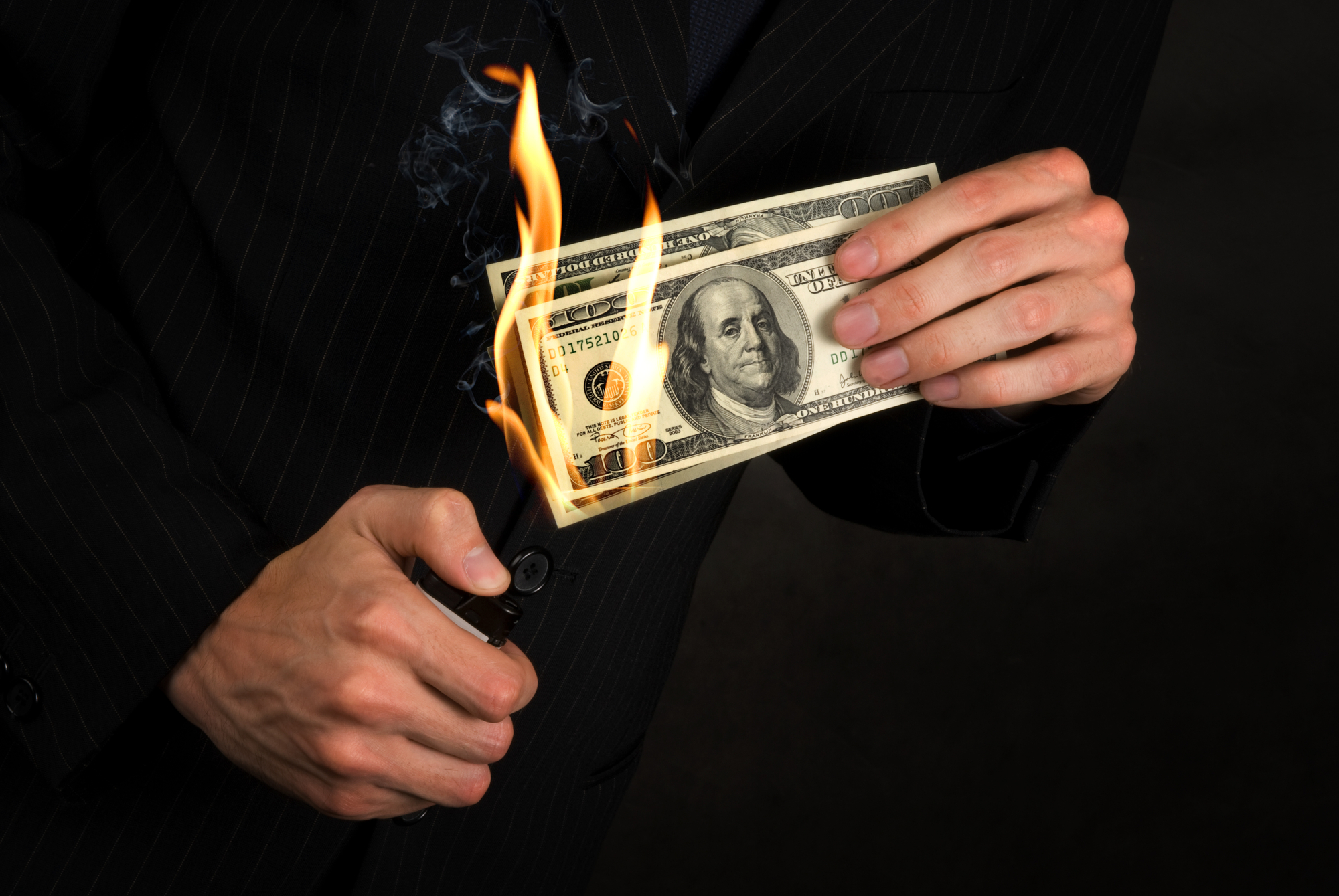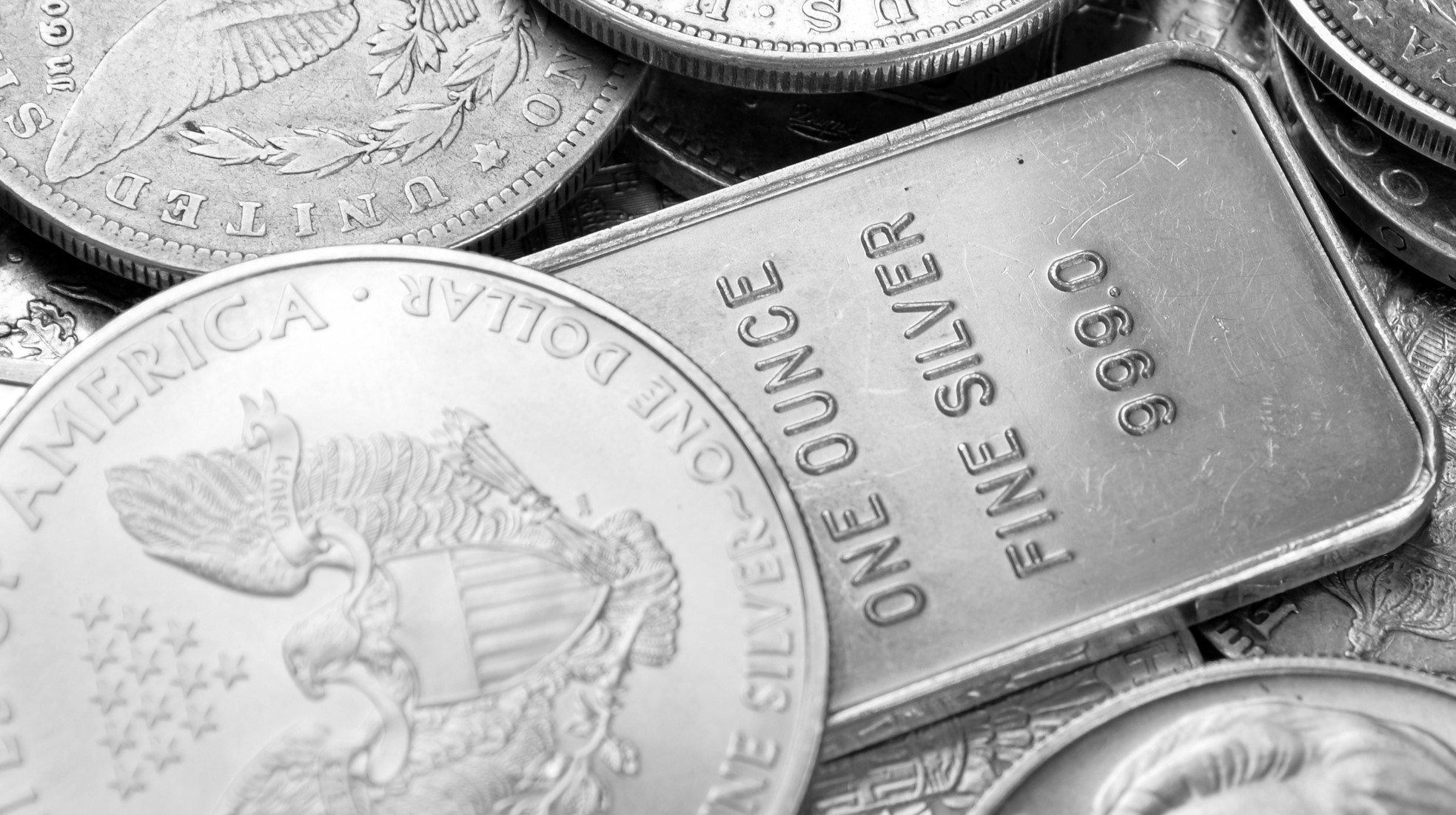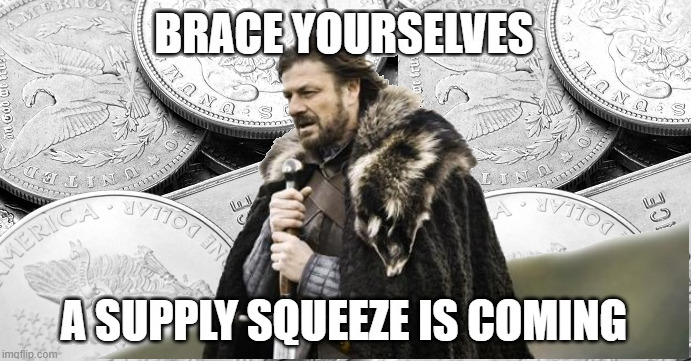The “Federal” “Reserve” (it’s neither federal nor a reserve) is, and I don’t say this lightly, one of Satan’s best works. But that’s a story for another day. Here it is, and we all have to deal with it. The American economy is still the world’s largest, and the US dollar is, for now, the global reserve currency. What happens to the dollar is the single most important factor in our collective economic wellbeing.
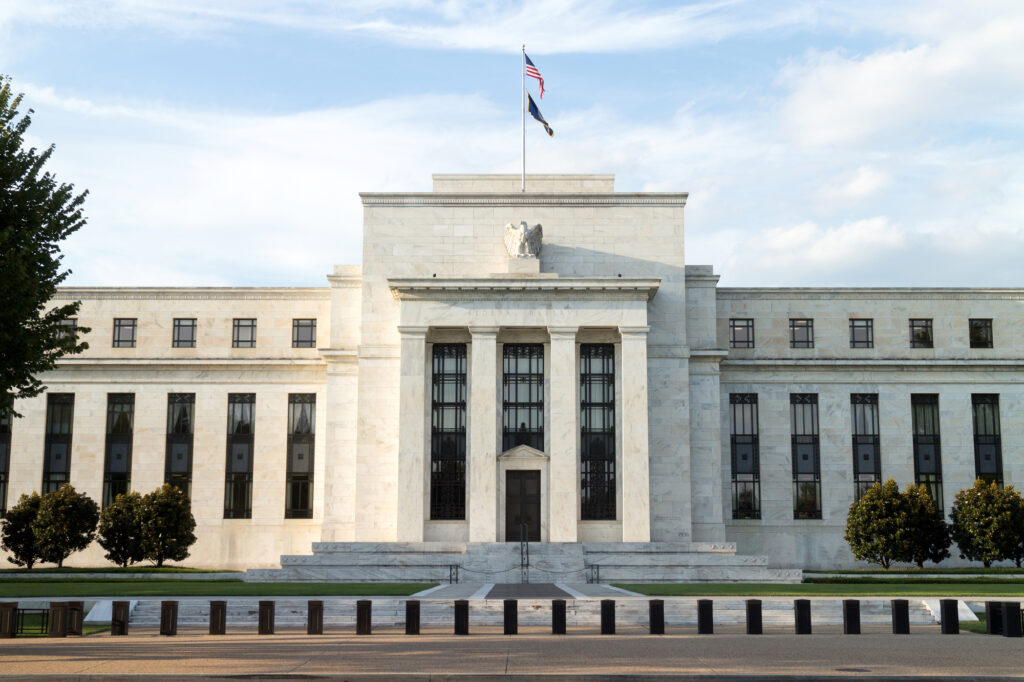
What is the funds rate and why do I care?
The federal funds rate is simply the interest that US banks can charge each other for overnight loans. Who cares what consenting banks do at night in the privacy of their own homes? Well, this single rate determines how much it costs for commercial banks to get liquidity, and that determines how much interest they charge the rest of us.
The Fed funds rate affects the “prime rate”, which changes the rates on, for example, your credit card debt. It also affects the London Interbank Overnight Rate, which has an effect on your mortgage rate. The Fed Funds rate is basically One Rate to Control Them All.
And it is centrally planned, because central planning has worked so well throughout history.
When the Fed in its infinite, privately owned wisdom decides that the economy is running hot, it raises interest rates. This makes it harder to finance dumb things (or anything), and excessive spending comes down, bringing inflation with it.
When the economy needs a sugar rush, they lower interest rates. This makes money cheaper, and more money starts moving around, hopefully (maybe?) doing useful things and often also raising the price of things we need in order to live.
Roughly speaking, when the Fed funds rate is low, it’s accompanied by or has the same effect as printing money (QE, Quantitative Easing), and when it’s high, it’s alongside or has the same effect as QT (Quantitative Tightening).
What’s the problem?
Debt. Those that have accumulated too much debt when money was cheap simply can’t pay it back when money becomes more expensive. In normal times, such imprudent entities would get liquidated and the capital would move to the control of people who respect it more, and society as a whole would improve. But we live in the age of moral hazard, of government guarantees and State interference and magic money trees and bailouts and bail-ins and Too Big to Fail. Snowflake Economics™️. Pirate Capitalism.
So instead, when it looks like everything is breaking, they lower interest rates again.
And the greedy fools breath a sigh of relief, and use the window of opportunity to unwind some debt, get their affairs in order, straighten up and fly right. Right?
Or do they, now safe in the knowledge that there are no consequences, use the even cheaper money to take on even more debt? Unfortunately for us, it’s the latter.
Now let’s look at possibly the most important chart in the world: the history of the Fed funds rate since the dollar became entirely unhinged from gold and hence reality, up till now (click to enlarge).
This chart shows that the entire fiat currency experiment is doomed, and that could be seen starting from the late 1990s. If you only read or listen about interest rates, you could imagine that the Powers That Be are capable of raising and lowering them around some kind of equilibrium, or of finding the Goldilocks interest rate that leads to stability. But that’s not what you can see on the chart. It’s a structural downtrend for 40 years: lower highs and lower lows, crumpling into zero in 2008.
Here’s the trick. With each rate change cycle, the debt gets bigger. Therefore, the maximum interest rate that can be tolerated without breaking something gets lower. And lower. This can only work for so long. Eventually the constant currency-unit creation must manifest as inflation and they have to raise interest rates to combat it. Except they can’t anymore.
Scylla
If the Fed raises interest rates too far, they break the stock, real estate, and debt markets. We’re not just talking about a few companies going bust or some banks being bailed out. This is Everything Everywhere All at Once, only without Michelle Yeoh to save the day.
That the stock market, much of which is by now comprised of zombie companies only kept going with the artificial blood of free Fed money, will die for real if the money supply dries up should be obvious from the chart above, or even a quick look at what’s happened since the Covid Crash.
Real estate? Around a third of UK mortgage holders believe the interest rate hikes over 2022 have made their mortgage repayments unaffordable. Unaffordable, with a BofE base rate of a mere 2.25%. Think about what unaffordable means in human terms. And what will happen when rates increase? If that third, or a half, or more, of houseowners become forced sellers, they’ll drag the price of your house with them and you can say goodbye to your home equity. The US is no better; the percentage of average household income spent on mortgage repayments has jumped from 19% to 27% in just one year. The average (median) American family has only about one month’s expenses in savings. Mathematically, many must have much less, with essentially no buffer against the rising cost of living.

And debt. This is the hard problem. The Fed may be willing to cause “some pain to households and businesses“; it may even be part of some evil conspiracy to let their hedge fund buddies buy up everything on the cheap (*cough, BlackStone, cough*). But you and I, dear reader, are not the only ones in debt. Every Western government is hugely in debt, especially the US. Their own pet economists say that the cost of paying the interest on their national debt (not paying it back, just the interest) will triple over the next decade, eventually eclipsing the huge sums they spend on the military. But even this grim forecast is based on wildly optimistic assumptions, including a 10-year Treasury yield of 2.4% in 2022. In fact, the 10-year yield is already more than 4%, and rates are likely heading much higher. At some point soon this becomes unaffordable. Think about what unaffordable means on a national level. Now add municipal, state, and international – at every level, public bodies are neck-deep in dollar-denominated debt that will become impossible to service.
Exactly what interest rate is needed to bring down inflation? No-one knows, especially not the PhDs from Clown College that told us inflation was transitory. Probably something between 5% and 20%, depending who you ask. This is not unrealistic; look again at the chart.
And what interest rate will start to break things? Probably much less than that. The Fed funds rate is at 2.5%, barely halfway to the target, and already some commercial banks (Credit Suisse, Deutsche Bank) are rumoured to be in distress, and UK pension funds have had to be rescued from insolvency by their central bank.
In short, the patient is too sick to survive the medicine.
Charybdis
And what if they decide not to break everything? Can we just keep interest rates at stupidly low levels and close our eyes and see if everything turns out ok?
Nope.
The problem is the same: debt. Or rather, the cause of debt, which is the inability of any Western government to spend less than it earns. In a tale as old as civilisation, they have to keep printing money to finance warfare, welfare, and various voter bribes, and this inevitably leads to inflation. We already printed the money, and with a short lag, surprise surprise, here comes the inflation. The proper cure for inflation is a sound money system and a free market for interest rates, but since only crazy people on the internet are advocating for that, it’s unlikely to happen.
Unless you crush inflation by making everyone too poor and miserable to spend by using high interest rates, it can become much worse, making everyone poor and miserable by eroding their purchasing power. If you continue to print money at an ever-increasing rate, the only possible result is hyperinflation.
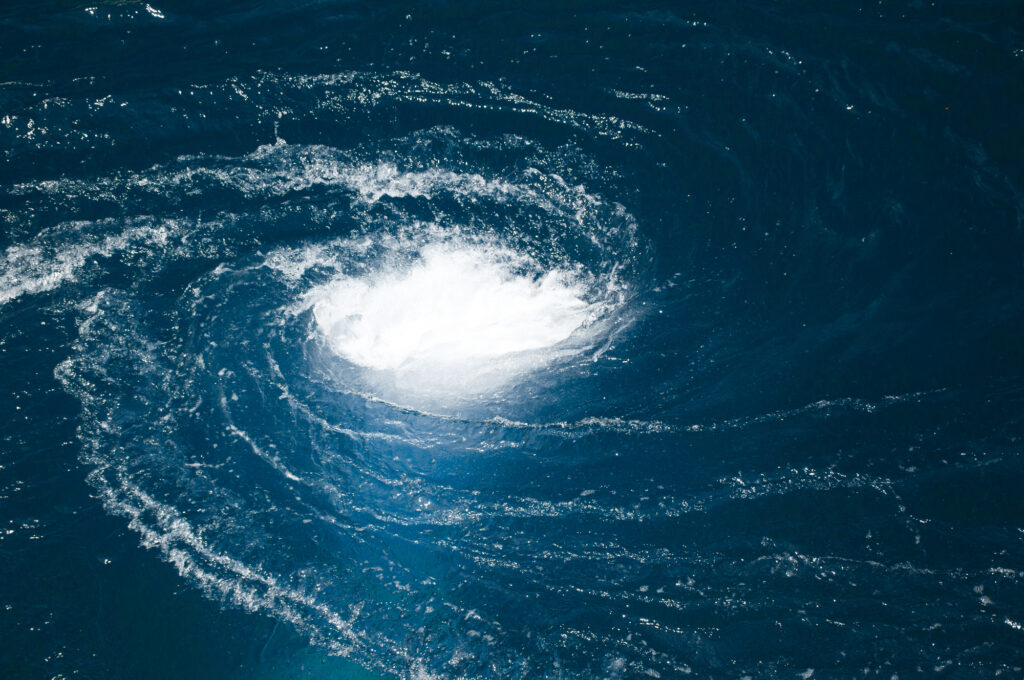
High or hyper-inflation has one advantage: it allows the government to pay back its existing debts in cheaper money than it borrowed, essentially a sneaky kind of default. But its disadvantages are more numerous and severe: no-one will lend the country money, no-one will invest in it, and eventually the people who can’t afford to eat or to heat their homes riot and rebel. Destruction of the currency is destruction of society.
Scylla and Charybdis
But wait, it gets worse.
We will probably get both a deflationary shock and high inflation. Deflation and inflation aren’t opposite sides on the same scale. They’re different things. In real terms, you can have both at once. It looks like this: things you own get less valuable, and things you need get more expensive.
If we first get terrible crashes in any one market, it will spread to all others because every institution (even those that are supposed to play by “safe” rules like pension funds) is over-leveraged and highly connected. This time, unlike in 2008, they cannot drop rates low enough to provide enough stimulus to recover from the crash (this is easier to understand visually; in the chart as in reality, zero is a constraint, and, crucially, everyone adjusted to ultra-low interest rates). Jobs disappear, profits fall, and so tax receipts collapse, and thus the government – every government – will get poorer. At the same time, many people, even those who want to work and sustain themselves, will genuinely need handouts to survive. The government gets poorer at the same time as people need more help. They will have no choice but to keep printing money to bail out citizens and themselves, never mind the markets. We end up with awful inflation.
On the other hand, if we first get terrible inflation, it will kill growth and wreak various other kinds of havoc. Distrust in the rapidly debasing currency will stop companies investing. Because money is worth so much less next quarter, long-term planning goes out of the window. Investment in infrastructure, research & development, and maintenance falls; energy gets even more expensive. Actually making anything (which is energy-intensive) becomes impractical. Efficiency falls. The supply chain shatters. Profits tumble. We get the impoverishment and falling productivity part of a deflationary crash even if prices measured in the falling currency are going up. Tax receipts fall, and are worth far less by the time they are collected. The government gets poorer at the same time as people need more help.
The chart shows graphically that there is no way out of this funnel. Up or down both result in the end of the current system. What worked for the last fifty years will not work for the next five.
The ship has already struck the iceberg. Plan accordingly.
First published October 21st, 2022.
🌍 Share this:
Want more to read? Here are my latest articles:

